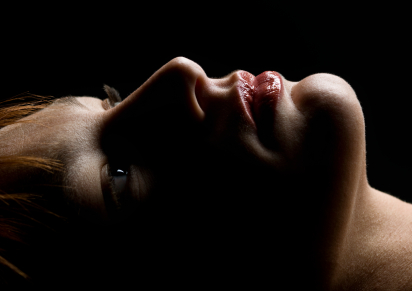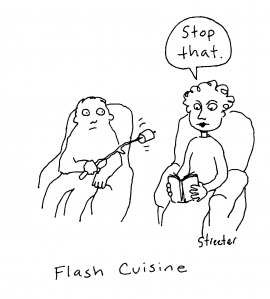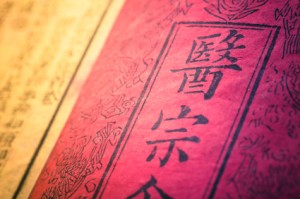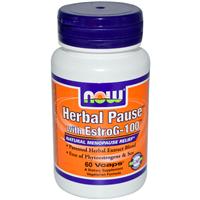Sleep…still between the mattress, the pillow and a hard place
Sleep. Oh, how you elude me.
Whether it’s hormones or stress, I’m beginning to forget what a full night’s sleep looks and feels like. In fact, if you ask me to tell you when it was that I last had a full night’s sleep, I’d probably tell you that I don’t recall. So, yes, I keep writing about it in hopes that the magic solution will one day transcend my fingertips and actually result in…8 full hours! What a concept!
Meanwhile, back the real world, I have encountered yet another study trying to explain why middle aged women don’t get the zzz’s they need. This time, hot flash bother appears to be the golden ticket. However, even more interesting is the fact that the researchers who conducted the study say that the “concept of bothersome”/bother might explain disparate findings between studies that point to hot flashes as the primary sleep deprivation factor versus those that point to overall wellbeing and life stressors.
To provide a bit of context, this particular study is part of an ongoing trial known as STRIDE (Do Stage Transitions Result in Detectable Effects), which is looking at women in various stages of menopause (45 to 65 years). And, as part of STRIDE, these women were asked to complete two, annual questionnaires, the first relating to basic questions on menopause status, medical history, tobacco/alcohol use, etc, and the second, relating to sleep and how hot flashes were or were not interrupting their lives. Sleep quality scores were based on trouble falling asleep, waking several times during the night or waking early and then not falling back asleep. Frequency and bother of hot flashes were rated on a scale of 0 to 5, including how much they interfered with work, social activities and leisure.
Importantly, women who reported having bothersome hot flashes (32%) were twice as likely as their peers reporting no hot flashes to experience some degree of sleep interruption. Additionally, when hot flashes interfered with life, they interfered with sleep.
So, what does this mean?
Perception is key. Consequently, when women perceive that their symptoms interfere with aspects of their lives outside the bedroom, especially leisure activities, they seem to interfere with lives inside it, namely, sleep.
What is lacking in this study is information on other possible factors that might influence overall sleep disturbance, such use of certain medications or depression. And, conclusions were based on self-reports, which we all know can be biased. Still, you have to wonder about the psychology, and how much, as women, our brains influence our lives and how we respond to key parts of them, like sleep.
Meanwhile, we are still between the mattress, the pillow and a hard place, at least I am. But, we are finally coming closer to discovering the why.
Read MoreNeedles and symptoms and a pathway, revealed…more on acupuncture
Click on acupuncture in the tag cloud and you’ll know that I’ve spent a number of years examining and sharing information about important studies on this blog. In some, acupuncture has been shown to alleviate vasomotor symptoms like hot flashes and night sweats, and in others, acupuncture appears to be no better than placebo or sham needles that are placed on accurate points but not actually inserted into the skin. However, I’ve also long argued that by slightly changing the way that we conduct scientific studies in the West and allowing for individualization, observed benefits might be different. Indeed, that’s exactly what researchers have seen with ACUFLASH and you can read more about that trial here.
Less clear that whether or not acupuncture can help symptoms (for the record, I am biased and I believe that over time it can), is HOW it works. The centuries old Chinese medicine paradigm is never so apparent than with acupuncture and although I am not sure why we need to know the ‘how,’ I am fairly certain that until it is revealed, there will be a lot of researchers and health practitioners questioning its validity or utility.
So, this brings me to a wonderful pilot study in the online version of Menopause, exploring that very question: how does acupuncture work on vasomotor symptoms?
In this small trial, 33 perimenopausal and postmenopausal received traditional acupuncture, sham acupuncture or nothing over a period of 12 weeks. The active groups received three treatments per week and all the women reported having at least 7 hot flashes a day. But there’s the rub: the researchers also looked at how traditional acupuncture affected the hypothalamic-pituitary axis (HPA), the part of the body that comprises the hypothalamus and pituitary and adrenal glands, controls digestion, our immune system, mood and emotions, sexuality, and how energy is used and stored. Moreover, this part of the body reacts quite negatively to stress by releasing a hormone known as cortisol. Not surprisingly, women who have very severe vasomotor symptoms tend to produce high levels of cortisol.
What did they learn?
- Most of the benefits, (e.g. reductions in hot flashes) occurred by week five and; hot flash severity and frequency declined by 86% and 78%, respectively in both the real acupuncture and sham acupuncture groups. But while the sham acupuncture group didn’t continue to improve, the real acupuncture group did.
- Likewise, anxiety and depression improved in both of these groups, as did sleep scores.
And the “how?”
It appears, at least from this small study, that acupuncture positively affected levels of cortisol and DHEA, the major steroid secreted by the adrenal glands that affects none other than the body’s production of estrogen. Consequently, if acupuncture helps to control the HPA, and HPA affects vasomotor symptoms, then perhaps scientists have the first clue as to why acupuncture may help certain menopausal symptoms. It also opens up an entirely new avenue for novel strategies to control them.
The bottom line is that there is hope and a new direction that researchers will ideally follow. Ultimately, acupuncture may prove to be even more effective than pharmaceutical strategies for menopausal symptoms and definitely, much safer.
The jury’s still out but it seems a helluva closer to a verdict.
Read More
Botanically speaking…EstroG-100
Got botanicals? You might want to get this one. Although the traditional Japanese medicine Kampo supplement TU-025 doesn’t appear to offer much hope in the hot flash department, a well-known botanical supplement widely used in Korea, EstroG-100, may. In fact, it appears that the proprietary blend of Korean herbs in EstroG-100, including Cynanchum wilfordii, Phlomis ubrosa and Angelica gigas are not only safe but help in a number of menopausal symptoms in addition to hot flashes.
So, what’s the lowdown on EstroG-100? Basically, the supplement has been studied in Asian women and we know from other alternative strategies that effectiveness among different ethnicities don’t always translate. Hence, I was pretty interested to learn that researchers decided to see if EstroG-100 would work on menopausal symptoms in a small group of white- and non-White Hispanics and African American women who were pre-, peri or menopausal. Over a three month time period, women either took 2 EstroG-1oo tablets or placebo twice daily and then using a scientific index, self-reported and rated symptoms, including:
- hot flashes
- cold swewats
- numbness, tingling
- insomnia
- nervousness, depression or feeling blue
- dizziness
- fatigue
- muscle and joint pain
- headache
- pounding heart
The study results suggest that EstroG-100 is not only safe, but it has a significant impact on a few very troublesome symptoms, namely hot flashes and sweats, insomnia, nervousness, feeling blue, dizziness and fatigue. Overall, menopausal symptom scores declined by more than half in women using EstroG-100 compared to women taking placebo. Moreover, initial, favorable changes were seen as early as 6 weeks. Estro-G also appeared to have a beneficial effect on the severity of vaginal dryness, a condition that plagues many menopausal women as estrogen levels decline. Even better were findings that EstroG-100 does not have any sort of estrogenic effect, indicating that it may potentially be safely used in women at risk for gynecological cancers. And, use of EstroG-100 does not appear to affect weight, body mass index or liver enzymes, all of which are affected by hormone replacement.
Less clear is how EstroG-100 will work in non-Hispanic white women and that study, along with studies in larger numbers of women may determine it’s overall benefit in menopause. Meanwhile, I’m pretty encouraged. This study addresses a lot of complaints about studies of alternatives; it is well designed, randomized, looks closely at adverse events and includes a variety of ethnic groups and menopausal status. Stay tuned for more on EstroG-100. This botanical may be here to stay!
Read More
Wednesday Bubble: Soy takes another hit
We’re live!
Welcome to the new home of Flashfree! Our URL has changed but the same content that you’ve grown to know and ‘love’ is the same.
Let’s kick off http://flashfree.me with the latest and ‘greatest’ report on soy: it does not help menopausal symptoms or prevent bone loss.
Isn’t this contrary to what’s been reported previously, at least with regards to women with the ability to produce S-equol?
In this latest nail to the soy coffin, research appearing in the Archives of Internal Medicine suggests that part of the issue in proving or disproving the utility of soy for menopause is the lack of trials of long duration, consistent use of low doses of soy isoflavones, small number of participants and too much breadth and depth of age and menopausal status. However, the SPARE trial (Soy Phytoestrogens as Replacement Estrogen), aimed to change this paradigm by examining the effect of daily 200 mg soy isoflavones in tablet form in 248 women between the age of 45 and 60. All participants had been in menopause for one to five years or for six to 12 months. These women were studied for two years, were instructed to take the active pill or placebo tablet before breakfast, and stop taking any hormones for at least six months before the study started. Calcium was supplemented in women who were taking less than 500 to 1000 mg daily. Importantly, women taking the isoflavone tablets were actually receiving a dose equal to approximately twice that normally obtained through food in Asian diets.
At the study’s end, the researchers found that women taking soy or placebo were on equal footing and that soy did not appear to prevent bone loss or reduce bone turnover. Moreover, soy did not appear to have any significant effect on hot flashes, night sweats, libido or vaginal dryness. They also say that even though women who are able to produce S-equol in their guts were likely to benefit from soy compared to women who are not, they did not see any specific benefit when these women were studied separately. Although not considered a dangerous side effect, constipation was experienced by more than a third of women taking soy.
So, what are we to think? Some studies say soy is effective, particularly among S-equol producers while others, like this well designed trial, show that it is now. However, there has been some data suggesting that the ratio of specific isoflavones may play an important role, and there is no information in the published study about this ratio other than to say that the soy supplement used is similar to those obtained in health food stores.
When it comes to soy, the verdict isn’t quite out yet, although the studies that have been conducted to date can’t seem to tease out what’s what. As always, use caution and lower your expectations. There are other non-hormonal approaches that may provide greater benefit when it comes to bone loss and menopausal hot flashes and other symptoms.
Want to read more on soy isoflavones? Check out the Flashfree archives.
Read MoreHot flashes and Japanese herbal medicine: the lowdown on TU-025
Women who choose to go the alternative route for menopausal hot flashes have few evidenced-based options. Although acupuncture and standardized black cohosh have been shown to be effective in ameliorating hot flashes, others, including red clover and even soy, have been less successful. Consequently, herbal practitioners often turn to Traditional Chinese medicine (TCM) herbal formulations or the lesser known (in the U.S.) Japanese multiherb medicinal formulations known as Kampo. Interestingly, the term Kampo refers to ‘the way of China” and the practice which is several thousand years old is based on TCM.
Kampo is prescribed by over 90% of Japanese gynecologists and is regulated by the Japanese Ministry of Health to insure manufacturing standards and product stability. One of the most popular Kampo agents for perimenopausal hot flash management is an 1,800 year old formulaton known as “keishibukuryogan” or in the US, as TU-025. Comprised of a combination of cinnamon bark, peony root, peach kernal and mountain bark, it active ingredient remains unknown. Japanese data from both the government and the manufacturer demonstrate a very low incidence of side effects and no estrogenic activity, which means that theoretically, it could be safely used by women who have had breast or gynecologic cancers. Nevertheless, its utility in American women has not been known, at least until now.
In a study published in the August issue of Menopause, 178 postmenopausal women were randomly assigned placebo, 7.5 g/daily TU-025 or 12.5 g/daily TU-025 for 12 weeks. All participants reported 28 or more hot flashes a week, had been in menopause for at least a year, had stopped using hormones for at least 8 weeks if they were already using them, smoked less than 10 cigarettes a day and most were slightly overweight or obese (based on body mass index). None were using antidepressants (which studies have shown may help alleviate hot flashes), nor did they have a history of breast or uterine cancer. While the 7.5 gram daily is the dose taken most often by Japanese women, the researchers upped the dose to 12.5 gm daily to account for a larger sized American woman.
Read More











